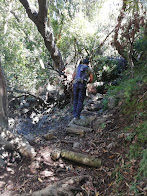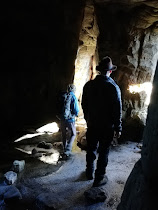Graaf's Pool Tunnel in Cape Town 1910
If you ever travel in the Sea
Point area of Cape Town and are passing the Bordeaux flats complex on the
beachfront then stop in front of the building and ponder about the following.
The Bordeaux apartment building used to be a family mansion originally owned by
the Marais family, hence the naming of Marais Road on the one side of the present-day
building. The Marais family named the original mansion Bordeaux in honour of
their French heritage. The mansion was bought from the Marais family by the
Graaf family who became well known in SA political circles for many years
thereafter. Lady Graaf, who stayed in the Bordeaux mansion, used to on a daily
basis cross the gravel road in front of her home so as to go swim in the sea
for health purposes. There was however a railway / tram line on the beachfront
that used to obstruct her path of travel to the beach. To accommodate this
problem her husband built an underground tunnel from the Bordeaux mansion to
the natural pool where she bathed daily. This pool is today known as Graaf's
Pool and is used as a male nudist swimming pool while the "secret"
underground tunnel still exists and runs under the Sea Point's Beach Road. If
you don't believe me then when you do visit the area walk down to Graaf's Pool
and as you go down the steps from the promenade look to your right and you will
see the entrance to the tunnel boarded up in the beachfront wall.





















